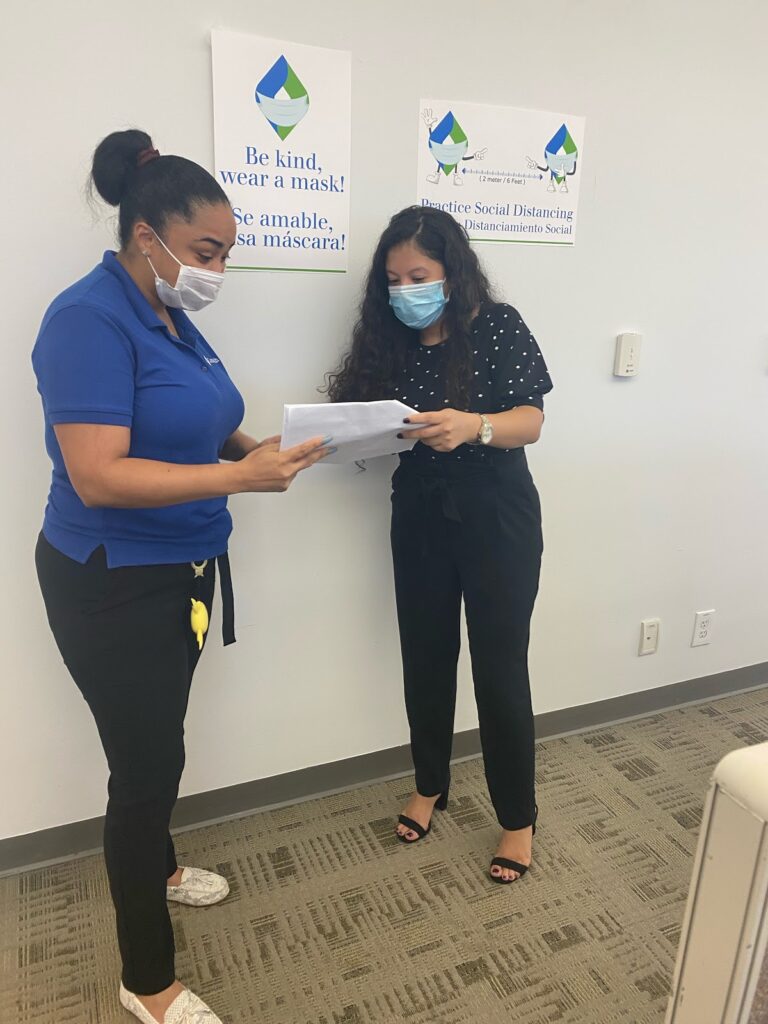What lies beneath the mask
by Izabella Perez
Masks have become a budding necessity in the world that we live in today because of the pandemic. They’ve been incorporated into our daily lives. You now find masks littered around your house and car: there’s always one hanging on your ear, and you’re shunned if you don’t wear a mask in public. With masks protecting us from one obstacle, it provides us with another: difficulty in communication. This can prove exceptionally difficult when trying to effectively convey information.
Our mouths are the main way we communicate with others. Take that away and everyday life becomes much more difficult. Words become muffled, conversations get distorted, and understanding people becomes more difficult. Consequently, the public has needed to adapt to these new social standards of living by adjusting the way they speak when interacting with anyone.
“Whenever I need to talk to someone in public, I use hand gestures and visual cues if possible like pointing at something to show someone what I’m referring to,” said 11th grader Max Baugmartner. “It’s not a big change that has been made to my daily life but it’s definitely a necessary one and I fully recognize that. Anything to help during this time of need.”
At this point in time, masks are vital to protect one another. However, they also make way for certain communication disadvantages. These can be seen in not only daily life but also while working. However, even though our day to day interactions may be inhibited, it’s all worth it to protect those around us and do our part to lessen the curve of the pandemic.
“It’s just an obstacle, but ways I’ve experienced how to overcome it is to be louder and talk slower,” said junior Annabelle Montan. “In the end, it’s not the end of the world and it isn’t a reason why people would take off their masks.”
While masks are necessary for the protection of ourselves and those around us, it unconsciously draws us closer to danger. With voices becoming muffled and words turning incoherent, this can cause people to unconsciously draw themselves closer to hear what you’re saying through the mask, violating the 6-feet precautionary rule
“I’ve caught myself stepping closer to someone to hear what they’re saying through their mask,” said sophomore Vanessa Jackson. “I always step back when I realize what I’m doing but it’s ironic how they’re supposed to protect us from danger when they inadvertently draw us closer.”

Masks particularly inhibit people who rely on lipreading. One of the main groups of people being affected by this are people whose first language isn’t English. Living in South Florida, there’s a large variety of cultures presented, which means that there are many people who do not speak English fluently and whose first language is, oftentimes, Spanish. Native Spanish speakers rely on mouth movements to fully understand a conversation where hand movements and gestures aren’t helpful.
“They usually read lips and that helps them interpret and understand the words that you’re using just in case they don’t fully understand the word that is being said and the context it’s in,” said Selina Perez, an executive assistant to the Coding, Credentialing, and Care Coordination departments at Cano Health. “I work with a mainly Cuban staff whose first language isn’t English, so we often run into these types of problems at work.”
Even with all the added restrictions, we still find ways to live our normal everyday lives. Even in school where it seems like precautions are at its highest, students and teachers still bond and communicate as if there weren’t yards aware from each other with fabric covering half of their faces.
“I still have a relationship with my students. We still have jokes. I still get on their case about stuff getting turned in,” said Marion County School teacher Natalie Kienzle. “We’ve found ways to show smiles in our voices and gestures. It’s still meaningful communication.”
